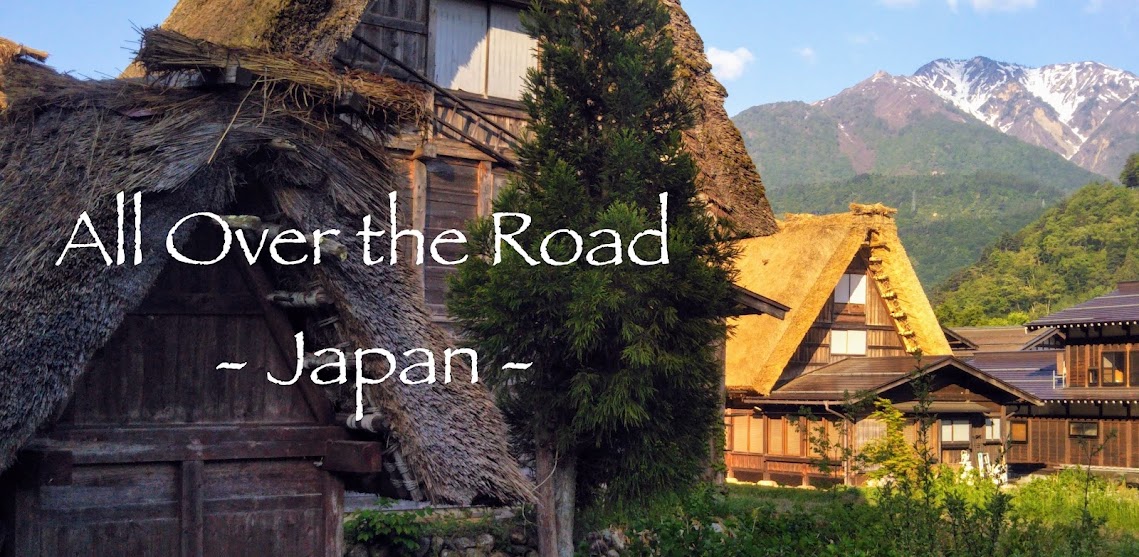Going on sixteen years here in Japan and I can say with the self-confidence of a guy who's not afraid to wear an anti-coronavirus mask that no, I'm not an onsen fanatic. Yes, that sort of proclamation can make you a heretic in Japanese society so I'll add, as I always do to maintain the Wa, that I like bathing in scalding hot water at certain times: after a long bike ride, or a day of skiing, or when someone else is paying.
The onsen village of Asama is right up the road from where I've lived for almost six years now. And the only time I ever bothered going up there was for the annual Taimatsu Festival, where groups of insane Japanese people light these massive bales of hay on fire and drag them through the streets, dressed head to toe in flammables.
But then came the coronavirus, and with it the cancellation of life - i.e. the cancellation of all events and the closure of every building a visitor to Matsumoto might be interested in. This puts the squeeze on a guy who is supposed to be keeping up the English version of the town's visitor blog.
In search of something blog-worthy I hopped on my bike and pedaled off, up to Asama Onsen where, once the smoke from all the burning hay clears, there's actually a lot to see. Enough for four blog posts at least, which are here in short form.
NOTE: If you were looking for information on hiking Mt. Asama, the active volcano further east, it should be evident by now you are in the wrong place. But here in Asama Onsen, unlike on active Asama-yama, you know when the place will be drowning in smoke. So hang out and keep reading.
Part One - No-Name-yama
There's an expression in Japanese, En ga aru, used to express a sort of fate that seems to be involved when you meet someone. My first day wandering the trails on the eastern edge of Asama I kept running into this woman who was only to happy to talk - about the area and the trails and the probability that the sound I'd heard up on Goten-yama was the grunt of a wild boar.
The next day I went back to see more - and ran into her again, at the place where mean-faced Fudo frowns down on all passersby. (More on him later.) She said she was on her way to this mountain with no name - none that she knew anyway - and invited me along. Who was I to say no?
I lagged behind, taking pictures and taking in the subdued scene as she tossed out bits of trivia related to the trail, which has been in use by the locals since the Edo Era, meaning 1600. Or 1868. Or any time in between. At the top was an odd shrine, and as my friend continued along the trail, heading for a lake I knew, I turned around to go back down and immediately got lost. Best way to get to know a place, I always say (and I say it a lot).
Check out No-Name-yama here.
Part Two - At the Foot of Daionji-yama
Late last year I did some travel writing for Japan's Tourism Bureau, digging into the Togakushi area of northern Nagano. It was a great gig, and one that forced me to appreciate all the details of a place since they weren't too keen on me just making stuff up.
I still like to make stuff up, but in addition to, not in place of, the real story of where I'm at. History can be plenty interesting on its own, but it usually needs a boost in the humor department.
The foot of Daionji-yama has a surprising number of sites big and small scattered about a small area. Some, like Nishinomiya Shrine and Fudo-in Temple, are readily evident. Some of the other bits, not so much. Like who is going to guess what those etched scribbles in those big upright rocks are supposed to mean? And if you don't read Japanese you'd never know. So I'm happy to help out and explain.
And I promise, I barely made any of it up.
Take a tour of the deities and the stony inscriptions here.
Part Three - Hiking Up Daionji-yama
Our hike up Mt. Daionji - named for a temple that no longer exists - starts with a pass by a memorial for the opening of a road that once did exist but, as mountain paths often do, has likely been subsumed by time and flora. We also pass a sign explaining how a man named Shinoda transported a noborigama, a 'climbing kiln', piece by piece, from a long way away. Like Daionji Temple, it is no longer here. Unlike Daionji Temple, it is somewhere else.
But the hike up the mountain is the main event here in Part Three. Pray for good weather when you stop by to greet the various gods enshrined at the bottom.
Part Four - Gotenyama
I have this map at home. Okay I have about fourteen thousand but one in particular showed there was a trail up this big hill called Gotenyama. The idea of checking it out was what really pushed me toward Asama Onsen in the first place. They can't close a mountain for a virus - though they have evidently been trying.
Like Daionji-yama, Gotenyama serves up a nice helping of history at the bottom, most of it still manifested in one physical form or another. However, whereas Daionji has mainly religious sites, Gotenyama's allure was born of the history of some of the long-ago rulers of this region.
Finish up your walking tour of Asama Onsen here.
Take your time, volcanic Asama-yama will still be there for you to climb tomorrow,
Probably.






No comments:
Post a Comment